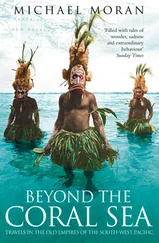The equinoctial current drives the waters of the Atlantic towards the coasts inhabited by the Mosquito Indians, and towards the shores of Honduras. The New Continent, stretching from south to north, forms a sort of dyke to this current. The waters are carried at first north-west, and passing into the Gulf of Mexico through the strait formed by Cape Catoche and Cape St. Antonio, follow the bendings of the Mexican coast, from Vera Cruz to the mouth of the Rio del Norte, and thence to the mouths of the Mississippi, and the shoals west of the southern extremity of Florida. Having made this vast circuit west, north, east, and south, the current takes a new direction northward, and throws itself with impetuosity into the Gulf of Florida. At the end of the Gulf of Florida, in the parallel of Cape Cannaveral, the Gulf-stream, or current of Florida, runs north-east. Its rapidity resembles that of a torrent, and is sometimes five miles an hour. The pilot may judge, with some certainty, of the proximity of his approach to New York, Philadelphia, or Charlestown when he reaches the edge of the stream; for the elevated temperature of the waters, their saltness, indigo-blue colour, and the shoals of seaweed which cover their surface, as well as the heat of the surrounding atmosphere, all indicate the Gulf-stream. Its rapidity diminishes towards the north, at the same time that its breadth increases and the waters become cool. Between Cayo Biscaino and the bank of Bahama the breadth is only 15 leagues, whilst in the latitude of 28½ degrees, it is 17, and in the parallel of Charlestown, opposite Cape Henlopen, from 40 to 50 leagues. The rapidity of the current is from three to five miles an hour where the stream is narrowest, and is only one mile as it advances towards the north. The waters of the Mexican Gulf; forcibly drawn to north-east, preserve their warm temperature to such a point, that in 40 and 41 degrees of latitude I found them at 22.5 degrees (18 degrees R.) when, out of the current, the heat of the ocean at its surface was scarcely 17.5 degrees (14 degrees R.). In the parallel of New York and Oporto, the temperature of the Gulf-stream is consequently equal to that of the seas of the tropics in the 18th degree of latitude, as, for instance, in the parallel of Porto Rico and the islands of Cape Verd.
To the east of the port of Boston, and on the meridian of Halifax, in latitude 41 degrees 25 minutes, and longitude 67 degrees, the current is near 80 leagues broad. From this point it turns suddenly to the east, so that its western edge, as it bends, becomes the western limit of the running waters, skirting the extremity of the great bank of Newfoundland, which M. Volney ingeniously calls the bar of the mouth of this enormous sea-river. The cold waters of this bank, which according to my experiments are at a temperature of 8.7 or 10 degrees (7 or 8 degrees R.) present a striking contrast with the waters of the torrid zone, driven northward by the Gulf-stream, the temperature of which is from 21 to 22.5 degrees (17 to 18 degrees R.). in these latitudes, the caloric is distributed in a singular manner throughout the ocean; the waters of the bank are 9.4 degrees colder than the neighbouring sea; and this sea is 3 degrees colder than the current. These zones can have no equilibrium of temperature, having a source of heat, or a cause of refrigeration, which is peculiar to each, and the influence of which is permanent.
From the bank of Newfoundland, or from the 52nd degree of longitude to the Azores, the Gulf-stream continues its course to east and east-south-east. The waters are still acted upon by the impulsion they received near a thousand leagues distance, in the straits of Florida, between the island of Cuba and the shoals of Tortoise Island. This distance is double the length of the course of the river Amazon, from Jaen or the straits of Manseriche to Grand Para. On the meridian of the islands of Corvo and Flores, the most western of the group of the Azores, the breadth of the current is 160 leagues. When vessels, on their return from South America to Europe, endeavour to make these two islands to rectify their longitude, they are always sensible of the motion of the waters to south-east. At the 33rd degree of latitude the equinoctial current of the tropics is in the near vicinity of the Gulf-stream. In this part of the ocean, we may in a single day pass from waters that flow towards the west, into those which run to the south-east or east-south-east.
From the Azores, the current of Florida turns towards the straits of Gibraltar, the isle of Madeira, and the group of the Canary Islands. The opening of the Pillars of Hercules has no doubt accelerated the motion of the waters towards the east. We may in this point of view assert, that the strait, by which the Mediterranean communicates with the Atlantic, produces its effects at a great distance; but it is probable also, that, without the existence of this strait, vessels sailing to Teneriffe would be driven south-east by a cause which we must seek on the coasts of the New World. Every motion is the cause of another motion in the vast basin of the seas as well as in the aerial ocean. Tracing the currents to their most distant sources, and reflecting on their variable celerity, sometimes decreasing as between the gulf of Florida and the bank of Newfoundland; at other times augmenting, as in the neighbourhood of the straits of Gibraltar, and near the Canary Islands, we cannot doubt but the same cause which impels the waters to make the circuitous sweep of the gulf of Mexico, agitates them also near the island of Madeira.
On the south of that island, we may follow the current, in its direction south-east and south-south-east towards the coast of Africa, between Cape Cantin and Cape Bojador. In those latitudes a vessel becalmed is running on the coast, while, according to the uncorrected reckoning, it was supposed to be a good distance out at sea. Were the motion of the waters caused by the opening at the straits of Gibraltar, why, on the south of those straits, should it not follow an opposite direction? On the contrary, in the 25th and 26th degrees of latitude, the current flows at first direct south, and then south-west. Cape Blanc, which, after Cape Verd, is the most salient promontory, seems to have an influence on this direction, and in this parallel the waters, of which we have followed the course from the coasts of Honduras to those of Africa, mingle with the great current of the tropics to resume their tour from east to west. Several hundred leagues westward of the Canary Islands, the motion peculiar to the equinoctial waters is felt in the temperate zone from the 28th and 29th degrees of north latitude; but on the meridian of the island of Ferro, vessels sail southward as far as the tropic of Cancer, before they find themselves, by their reckoning, eastward of their right course.* (* See Humboldt's Cosmos volume 1 page 312 Bohn's edition.)
We have just seen that between the parallels of 11 and 43 degrees, the waters of the Atlantic are driven by the currents in a continual whirlpool. Supposing that a molecule of water returns to the same place from which it departed, we can estimate, from our present knowledge of the swiftness of currents, that this circuit of 3800 leagues is not terminated in less than two years and ten months. A boat, which may be supposed to receive no impulsion from the winds, would require thirteen months to go from the Canary Islands to the coast of Caracas, ten months to make the tour of the gulf of Mexico and reach Tortoise Shoals opposite the port of the Havannah, while forty or fifty days might be sufficient to carry it from the straits of Florida to the bank of Newfoundland. It would be difficult to fix the rapidity of the retrograde current from this bank to the shores of Africa; estimating the mean velocity of the waters at seven or eight miles in twenty-four hours, we may allow ten or eleven months for this last distance. Such are the effects of the slow but regular motion which agitates the waters of the Atlantic. Those of the river Amazon take nearly forty-five days to flow from Tomependa to Grand Para.
Читать дальше












